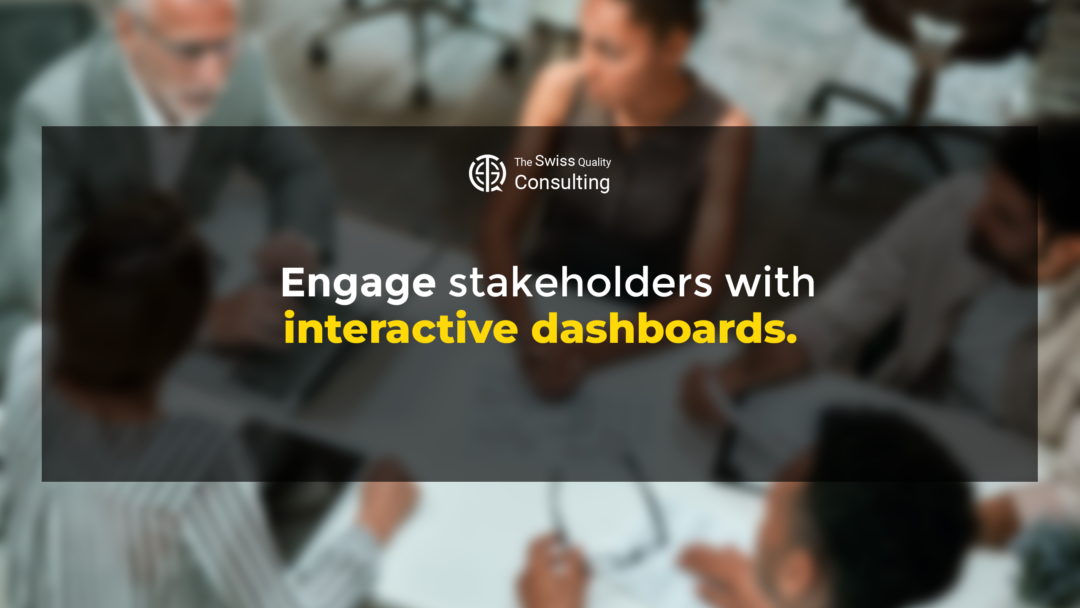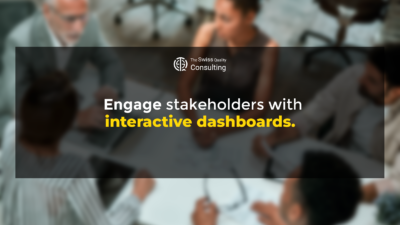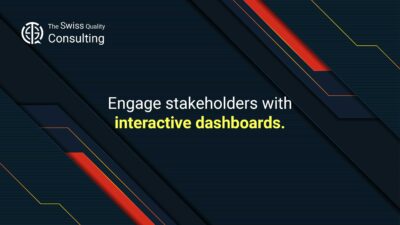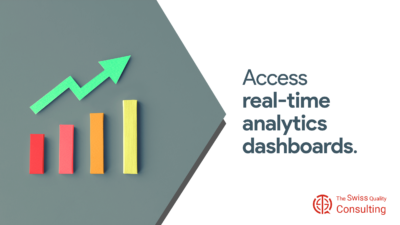Transforming Communication in Business with Dynamic Visualization Tools
Engaging Stakeholders with Interactive Dashboards is becoming an essential strategy for business executives, mid-level managers, and entrepreneurs seeking to improve communication and decision-making processes. In a world where data drives business, the ability to present complex information in an accessible and interactive format is invaluable.
Why Interactive Dashboards are Key to Stakeholder Engagement
Interactive dashboards transcend static visualization, serving as a dynamic platform for exploring data and uncovering hidden insights. This transformative approach empowers stakeholders to engage with complex information in a user-friendly and interactive manner, enabling them to:
1. Explore Data Intuitively: Interactive dashboards provide a visual playground where users can explore data through various filters, drill-downs, and slicers. This allows them to uncover hidden patterns and trends, gain deeper understanding of the data, and identify areas for further investigation.
2. Discover New Insights: Interactive dashboards empower users to analyze data from multiple perspectives and discover new insights that may not be readily apparent in static reports. This fosters creative exploration and data-driven decision-making, leading to improved performance and strategic advantage.
3. Make Informed Decisions Quickly: Interactive dashboards provide real-time insights and actionable data, enabling stakeholders to make informed decisions quickly and efficiently. This eliminates the need for lengthy data analysis and interpretation, allowing for swift action and adaptation to changing business conditions.
4. Enhance Collaboration and Communication: Interactive dashboards serve as a centralized platform for sharing information and facilitating collaboration across teams and departments. This promotes transparency, fosters a data-driven culture, and empowers teams to work together towards common goals.
5. Improve Data Accessibility and Usefulness: Interactive dashboards make complex data easy to understand and accessible to everyone, regardless of their technical expertise. This democratizes access to information, empowers employee engagement, and drives data-driven decision-making at all levels of the organization.
6. Monitor Performance and Identify Trends: Interactive dashboards provide real-time monitoring of key performance indicators (KPIs) and business metrics. This allows organizations to identify trends, track progress towards goals, and make adjustments as needed to optimize performance and achieve strategic objectives.
7. Customize Dashboards to Specific Needs: Interactive dashboards can be tailored to meet the specific needs of individual users and departments. This ensures that the presented data is relevant and meaningful, leading to better decision-making and improved outcomes.
Beyond Static Visualization: A Catalyst for Data-Driven Growth:
By prioritizing the adoption of interactive dashboards, organizations unlock the true potential of data-driven growth. This strategic approach empowers them to enhance data exploration, uncover hidden insights, make informed decisions quickly, foster collaboration, improve communication, monitor performance, and ultimately achieve sustainable success.
Embrace the power of interactive dashboards and embark on a transformative journey towards a future where data is not just analyzed, but actively explored, understood, and leveraged to drive remarkable results. By investing in the right tools, fostering a culture of data exploration, and empowering your stakeholders to become active participants in the data-driven decision-making process, you can unlock the full potential of your organization and build a future of data-driven growth and competitive advantage.
Integrating Generative Artificial Intelligence in Dashboard Design
Generative AI can significantly enhance the capabilities of interactive dashboards. By incorporating AI, dashboards can not only display information but also predict trends, offer insights, and suggest actions based on the data. This integration makes dashboards a powerful tool for strategic planning and decision-making.
Executive Coaching for Effective Dashboard Utilization
For successful implementation of interactive dashboards, leaders need to understand how to use these tools effectively. Executive coaching can play a crucial role in equipping leaders with the necessary skills to interpret dashboard data and make data-driven decisions. This coaching also focuses on training leaders to communicate insights effectively to their teams and other stakeholders.
Communication Strategies for Maximizing Dashboard Impact
Effective communication is essential in maximizing the impact of interactive dashboards. This involves training teams on how to use these tools, explaining the relevance of the data presented, and encouraging a culture of data-driven decision-making. Clear communication ensures that all stakeholders can derive meaningful insights from the dashboards.
Project Management in Dashboard Development and Deployment
Developing and deploying interactive dashboards is a complex project that requires meticulous planning and management. Effective project management ensures that the dashboard development is aligned with business objectives, completed within budget, and delivered on time. It also involves coordinating with IT specialists, data analysts, and end-users to ensure the tool meets the needs of all stakeholders.
Change Management for Adopting New Visualization Tools
Introducing new tools like interactive dashboards often involves changes in how organizations handle data and make decisions. Effective change management strategies are crucial for a smooth transition. This includes addressing any resistance to the new tool, providing adequate training, and highlighting the benefits of using dashboards for data visualization and decision-making.
Conclusion Engaging Stakeholders with Interactive Dashboards
Engaging stakeholders with interactive dashboards is more than just a technological upgrade; it’s a strategic approach to enhancing business intelligence. By leveraging these tools, businesses can foster a more interactive, data-driven culture, leading to better informed, quicker decision-making and higher stakeholder engagement.
#InteractiveDashboards, #DataVisualization, #StakeholderEngagement, #BusinessIntelligence, #AIIntegration























